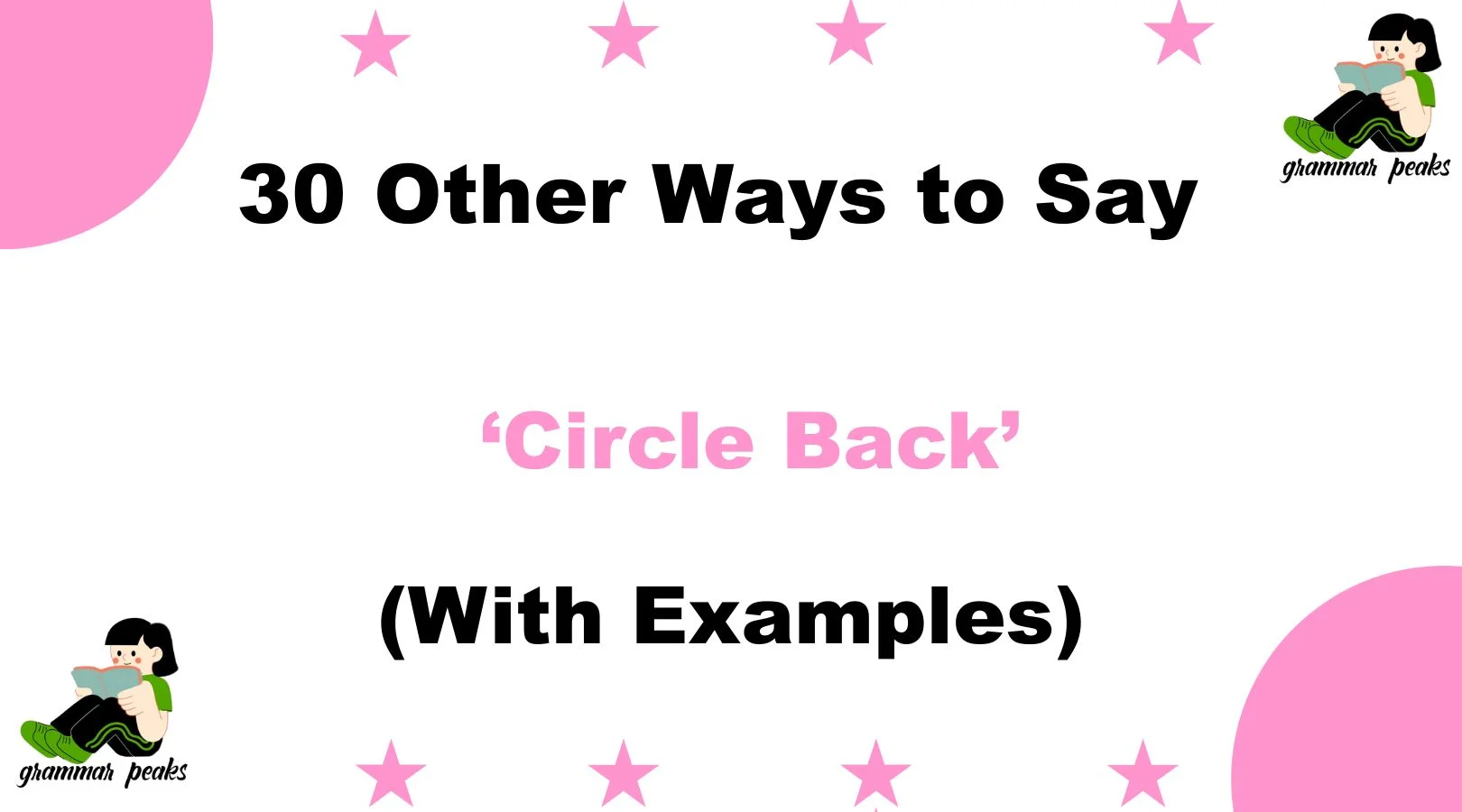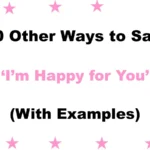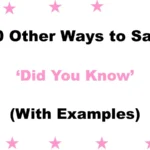Finding the right words to express yourself, especially in professional or personal conversations, can make all the difference. Saying “circle back” is common, but sometimes it feels a bit mechanical or overused.
Choosing thoughtful and warm alternatives not only conveys your message clearly but also adds a personal touch that helps build genuine connections. Whether you want to sound more polite, empathetic, or professional, these 30 alternatives will help you communicate with care and clarity.
What Does “Circle Back” Mean?
The phrase “circle back” means to return to a previous topic, task, or conversation at a later time. It’s often used in professional settings to indicate that a matter isn’t being ignored, but simply postponed until there’s more clarity, information, or time to address it properly.
For example, a manager might say, “Let’s circle back on this next week,” meaning the team will revisit the discussion after other priorities are handled. It’s a way to keep communication open and respectful while managing timelines or decision-making processes.
When to Use “Circle Back”
You should use “circle back” when you need to pause a discussion or decision and plan to return to it later, especially in a professional or collaborative setting. It’s useful when more information is needed, when someone else needs time to respond, or when priorities shift temporarily.
For example, you might say, “Let’s circle back on this after the client meeting,” to show you’re not dismissing the topic—just postponing it. It’s most effective in emails, meetings, or project updates where the tone is businesslike but respectful. Just be sure your timing is clear so it doesn’t feel like you’re brushing the issue aside.
Is It Professional/Polite to Say “Circle Back”?
Yes, “circle back” is generally considered professional and polite, especially in workplace settings like emails, meetings, or project discussions. It signals that you intend to return to a topic later, showing that you’re organised and thoughtful.
However, it can sometimes feel overused or impersonal, especially in more human-centred or emotionally sensitive conversations. If you’re aiming for a more empathetic or conversational tone, it may be better to use a clearer, warmer alternative like “let’s revisit this” or “I’ll check in with you soon.” Being mindful of your audience and tone will help ensure your message feels both professional and personal.
Pros and Cons of Saying “Circle Back”
Pros:
- Clear intent to revisit a topic
- Commonly understood phrase
- Shows follow-up commitment
Cons:
- Can feel repetitive or robotic
- Lacks emotional warmth or personalization
- May seem vague if overused
Synonyms for “Circle Back”
- Follow up
- Get back to you
- Touch base
- Check in
- Reach out again
- Reconnect
- Come back to
- Loop back
- Return to
- Revisit
- Ping you later
- Respond later
- Follow through
- Keep you posted
- Update you
- Resume discussion
- Get in touch
- Touch on again
- Circle around
- Look into it
- Come around to
- Check back
- Bring up later
- Drop a line
- Touch on
- Speak again
- Bring back up
- Get back with info
- Ping back
- Return with details
1. Follow Up
Definition: To take additional action or revisit a topic after the initial contact.
Explanation: This is a straightforward way to show continued interest or progress.
Example: I’ll follow up with you once I have the report ready.
Best Use: Professional emails, meetings, and project updates.
Worst Use: Overusing can feel pushy if frequent and unnecessary.
Tone: Polite, professional, and proactive.
2. Get Back to You
Definition: Promise to respond or provide information later.
Explanation: Casual and conversational, good for both formal and informal contexts.
Example: Let me check the details and get back to you soon.
Best Use: Customer service, quick conversations, emails.
Worst Use: Avoid if it sounds noncommittal or vague.
Tone: Friendly and approachable.
3. Touch Base
Definition: To briefly connect and exchange updates.
Explanation: Implies a quick check-in to stay aligned.
Example: Let’s touch base next week on the project status.
Best Use: Team meetings and brief catch-ups.
Worst Use: Can seem vague if not followed by clear action.
Tone: Casual and collaborative.
4. Check In
Definition: To make sure everything is on track or see how someone is doing.
Explanation: Shows care and attention to progress or well-being.
Example: I’ll check in with you after the client meeting.
Best Use: Regular updates and personal outreach.
Worst Use: May seem intrusive if overused.
Tone: Caring and considerate.
5. Reach Out Again
Definition: To contact someone once more for information or follow-up.
Explanation: Highlights intention to reconnect without pressure.
Example: I’ll reach out again once I have new details.
Best Use: Networking, customer relations.
Worst Use: Avoid if it feels repetitive.
Tone: Warm and respectful.
6. Reconnect
Definition: To renew contact or conversation after some time.
Explanation: Often used to re-establish communication with warmth.
Example: Let’s reconnect next week to finalize the plan.
Best Use: Personal and professional follow-ups.
Worst Use: Not ideal for urgent matters.
Tone: Friendly and inviting.
7. Come Back To
Definition: To return focus to a topic later.
Explanation: Simple and clear for redirecting discussions.
Example: We’ll come back to this point after reviewing the data.
Best Use: Meetings, presentations.
Worst Use: Avoid casual talk as it may sound stiff.
Tone: Neutral and clear.
8. Loop Back
Definition: To return to a previous topic or person.
Explanation: Popular in corporate communication for collaboration.
Example: I’ll loop back with the team for more input.
Best Use: Team emails and project management.
Worst Use: May sound jargon-heavy to some.
Tone: Professional, informal.
9. Return To
Definition: To revisit or address something again.
Explanation: Formal and precise phrasing.
Example: We will return to your question during the next meeting.
Best Use: Formal discussions and reports.
Worst Use: Could sound rigid in casual conversations.
Tone: Formal and respectful.
10. Revisit
Definition: To reconsider or discuss again.
Explanation: Implies thoughtful review before continuing.
Example: Let’s revisit this topic after new data comes in.
Best Use: Strategic planning and problem-solving.
Worst Use: Not for quick updates.
Tone: Reflective and professional.
11. Ping You Later
Definition: To send a quick message or reminder later.
Explanation: Casual and tech-savvy phrase.
Example: I’ll ping you later with the updated file.
Best Use: Informal chats and instant messaging.
Worst Use: Avoid formal emails.
Tone: Friendly and informal.
12. Respond Later
Definition: To reply after some time.
Explanation: Direct and clear, suitable for delays.
Example: I’ll respond later once I review your request.
Best Use: Emails and formal communication.
Worst Use: Can seem distant if no timeline is given.
Tone: Professional and neutral.
13. Follow Through
Definition: To complete an action or commitment.
Explanation: Shows reliability and dedication to tasks.
Example: I will follow through with the promised updates.
Best Use: Commitment-heavy communication.
Worst Use: Not for casual conversation.
Tone: Serious and dependable.
14. Keep You Posted
Definition: To provide continuous updates.
Explanation: Friendly way to ensure ongoing communication.
Example: I’ll keep you posted on any changes.
Best Use: Project tracking and customer relations.
Worst Use: Avoid if updates won’t actually happen.
Tone: Warm and reassuring.
15. Update You
Definition: To share new information as it becomes available.
Explanation: Clear and professional.
Example: I’ll update you after I speak with the client.
Best Use: Emails and status reports.
Worst Use: Can feel impersonal if overused.
Tone: Professional and direct.
16. Resume Discussion
Definition: To continue talking about a subject after a pause.
Explanation: Formal way to restart conversations.
Example: We will resume discussion on the contract next week.
Best Use: Meetings and negotiations.
Worst Use: Too formal for casual chats.
Tone: Formal and purposeful.
17. Get in Touch
Definition: To make contact again.
Explanation: Polite and versatile phrase.
Example: I’ll get in touch with you once I have details.
Best Use: Networking and follow-up.
Worst Use: Avoid if timing is uncertain.
Tone: Friendly and polite.
18. Touch On Again
Definition: To briefly mention a topic again.
Explanation: Implies a light revisit rather than deep discussion.
Example: We’ll touch on that point again in tomorrow’s call.
Best Use: Meetings and presentations.
Worst Use: May sound vague if overused.
Tone: Casual and light.
19. Circle Around
Definition: To return to a subject or person.
Explanation: Similar to “circle back,” but slightly less common.
Example: I’ll circle around to this after finishing the report.
Best Use: Team communication.
Worst Use: Avoid if unclear to the audience.
Tone: Informal and collaborative.
20. Look Into It
Definition: To investigate or consider further.
Explanation: Shows intention to find answers before responding.
Example: Let me look into it and get back to you.
Best Use: Problem-solving and queries.
Worst Use: Avoid if used without follow-up.
Tone: Helpful and proactive.
21. Come Around To
Definition: To eventually agree or return to a thought.
Explanation: Indicates a process before response.
Example: I’ll come around to your suggestion after reviewing it.
Best Use: Negotiations and discussions.
Worst Use: Can seem indirect if overused.
Tone: Patient and thoughtful.
22. Check Back
Definition: To return for updates or follow-up.
Explanation: Encourages ongoing communication.
Example: Please check back with me next week.
Best Use: Customer service and teamwork.
Worst Use: May sound passive if used too often.
Tone: Neutral and inviting.
23. Bring Up Later
Definition: To mention a topic again at a future time.
Explanation: Good for postponing sensitive subjects.
Example: Let’s bring this up later when everyone is ready.
Best Use: Meetings and negotiations.
Worst Use: Avoid if the topic is urgent.
Tone: Considerate and strategic.
24. Drop a Line
Definition: To send a brief message or contact.
Explanation: Informal and friendly.
Example: Drop me a line when you’re free.
Best Use: Personal and informal communication.
Worst Use: Too casual for professional contexts.
Tone: Warm and casual.
25. Touch On
Definition: To mention or discuss briefly.
Explanation: Useful for light mentions without deep focus.
Example: We’ll touch on the budget in the next meeting.
Best Use: Presentations and discussions.
Worst Use: Avoid if full attention is needed.
Tone: Light and brief.
26. Speak Again
Definition: To talk once more after some time.
Explanation: Simple promise of future communication.
Example: I look forward to speaking again soon.
Best Use: Ending emails and calls politely.
Worst Use: Vague if no timing is specified.
Tone: Polite and hopeful.
27. Bring Back Up
Definition: To raise a topic again for consideration.
Explanation: Used to reintroduce points in discussion.
Example: I will bring this back up in tomorrow’s meeting.
Best Use: Meetings and group discussions.
Worst Use: Avoid if the topic is resolved.
Tone: Formal and direct.
28. Get Back with Info
Definition: To return with more details or answers.
Explanation: Shows intention to provide follow-up information.
Example: I’ll get back with info once I confirm.
Best Use: Emails and customer service.
Worst Use: Avoid if no clear follow-up plan exists.
Tone: Professional and informative.
29. Ping Back
Definition: To send a quick reminder or message later.
Explanation: Casual, tech-savvy phrase often used in messaging.
Example: I’ll ping back when the update is ready.
Best Use: Informal communication and chats.
Worst Use: Too casual for formal settings.
Tone: Friendly and informal.
30. Return with Details
Definition: To come back with specific information.
Explanation: Formal and clear about providing updates.
Example: I will return with details after consulting the team.
Best Use: Formal emails and project updates.
Worst Use: Avoid in casual conversation.
Tone: Professional and precise.
Conclusion
Choosing the right way to say “circle back” can transform your communication from routine to meaningful. Each alternative offers its own flavor—whether it’s warm and friendly, professional and clear, or casual and approachable. Being mindful of tone, context, and audience will help your message resonate with care and thoughtfulness.
Remember, effective communication is not just about what you say, but how you say it. Using these alternatives thoughtfully shows respect for the other person’s time and feelings, making every follow-up feel personal and sincere.
FAQs
1. What does “circle back” mean in professional communication?
“Circle back” is a commonly used phrase in business or work settings that means to return to a conversation, topic, or task at a later time. It’s often used to postpone a decision or follow up after more information becomes available.
2. Is it too informal or overused to say “circle back” in emails?
Yes, many professionals feel that “circle back” can sound overused or vague, especially in formal or high-stakes communication. While it’s still acceptable, using clearer and more thoughtful alternatives can help your message feel more intentional and personal.
3. When should I use a different phrase instead of “circle back”?
Consider using alternatives when you want to:
- Sound more authentic or warm
- Build trust with clients or teammates
- Clarify timing or expectations
- Avoid sounding too corporate or impersonal
4. What are the best polite alternatives to “circle back”?
Some of the best polite and professional alternatives include:
- “Let’s reconnect on this”
- “Can we revisit this later?”
- “I’ll follow up with you”
These options show initiative, care, and clarity, while maintaining professionalism.
5. Can I use these alternatives in personal conversations too?
Absolutely. While “circle back” is typically a work phrase, many alternatives like “let’s touch base later” or “we can check in again soon” work just as well in personal settings, especially when you want to sound caring and considerate without being too formal.

Mariah Cannon is a dedicated Senior Content Specialist at GrammarPeaks, known for her clear, engaging writing and deep knowledge of English grammar and usage. With a background in linguistics and years of experience in content development, Mariah crafts informative and accessible articles that empower readers to master the nuances of the English language. Her work reflects a commitment to clarity, education, and helping others express themselves with confidence.





